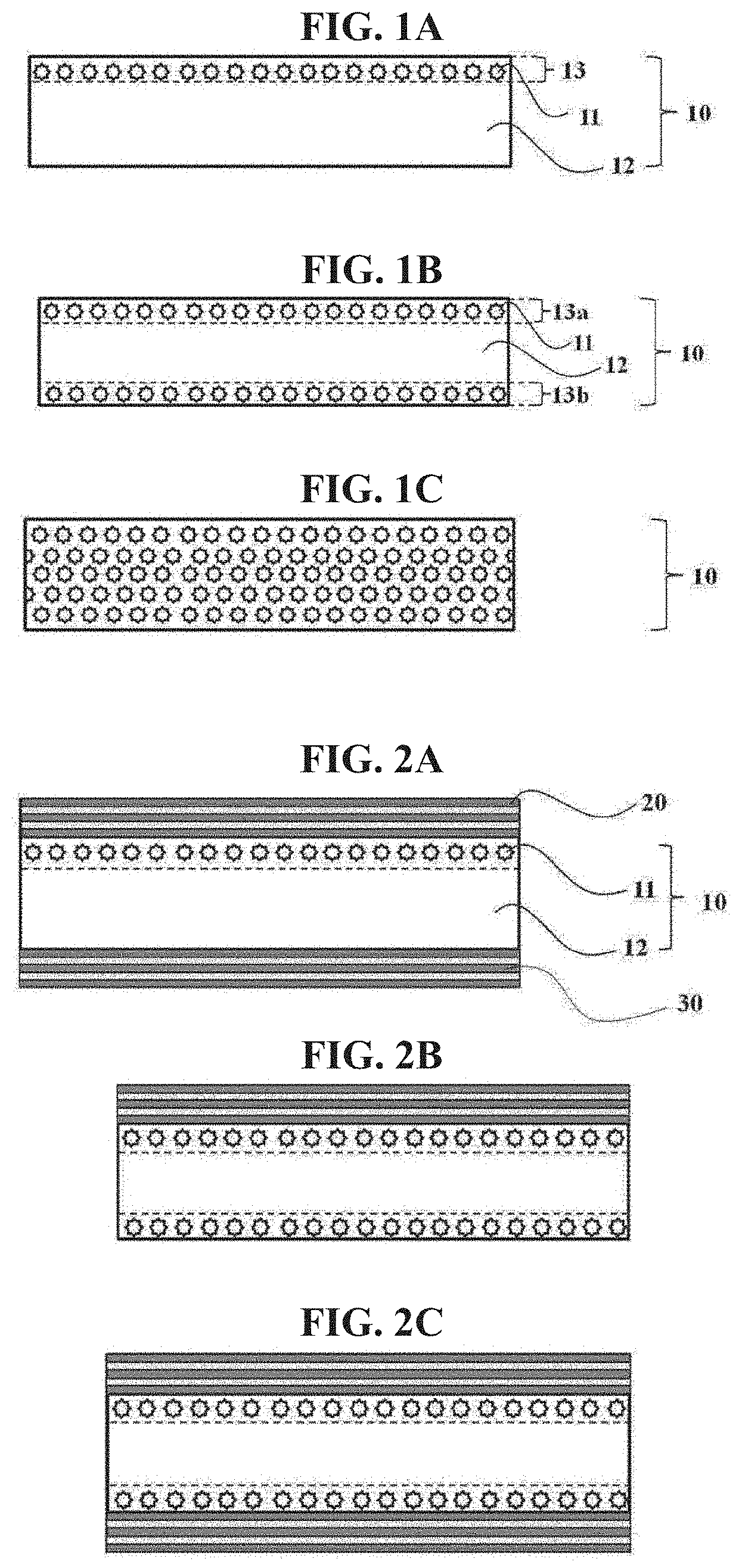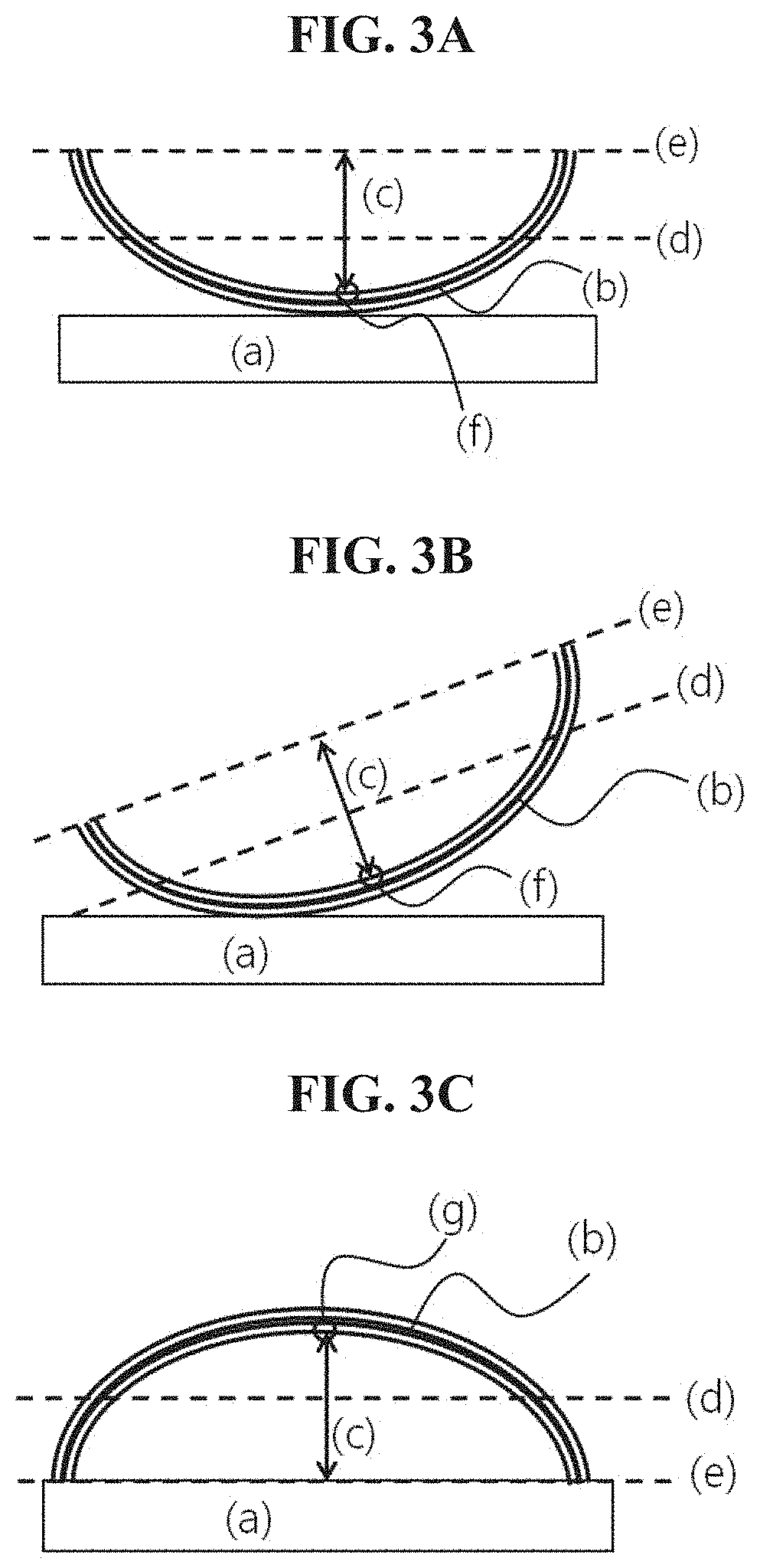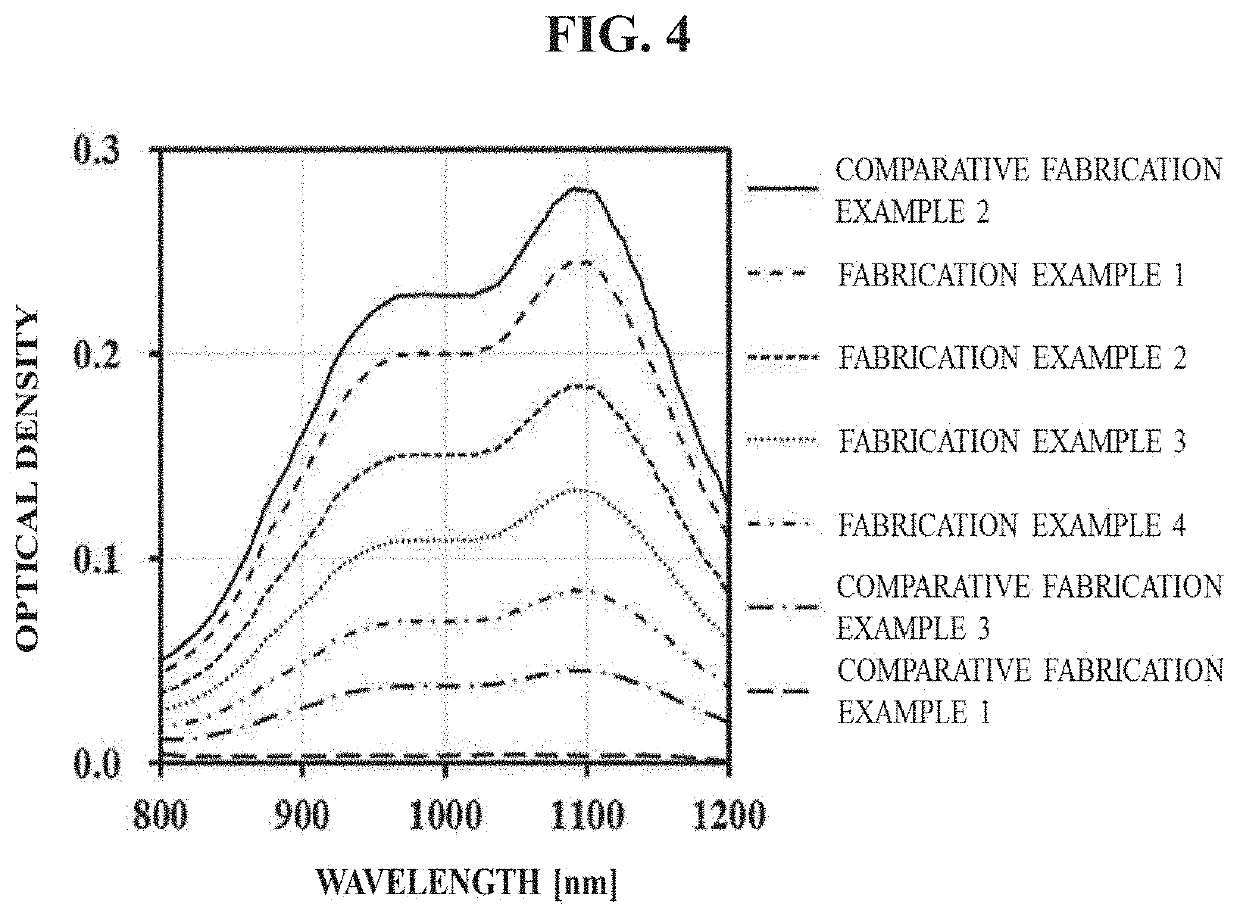Optical article and optical filter including same
a technology of optical filter and optical article, applied in the field of optical article and optical filter, can solve the problems of difficult fabrication of thin absorbing near-infrared blocking filter, limit of conventional near-infrared blocking filter, and inability to apply to high-resolution camera modules with five or more mega pixels, etc., to achieve suppressed transmittance, prevent lens flare, and high transmittance
- Summary
- Abstract
- Description
- Claims
- Application Information
AI Technical Summary
Benefits of technology
Problems solved by technology
Method used
Image
Examples
fabrication examples 1 to 4
[0123]According to a fabrication example of the present invention, an optical article having first absorption peak and second absorption peak was prepared as follows.
[0124]A near-infrared absorbing pigment A (QCR Solutions Corp., US) represented as Formula 1 and having the absorption maximum in the wavelength range of 700±5 nm, a near-infrared absorbing pigment B (QCR Solutions Corp., US) represented as Formula 1 and having the absorption maximum in the wavelength range of 720±5 nm, and a near-infrared absorbing pigment C (Carlit Co., Ltd., Japan) represented as Formula 2 and having the absorption maximum in the wavelength range of 1,097±5 nm were mixed as contents shown in Table 1 below on the basis of 100 parts by weight of a resin. At this time, a polymethylmethacrylate (PMMA) resin was used as the resin, and cyclohexanone was used as an organic solvent. Afterward, the resulting mixture was stirred using a stirrer for 24 hours or more such that an absorbing solution was prepared....
examples 1 to 7
[0126]A first selective wavelength reflection layer having a dielectric multilayer film structure was formed by alternately depositing SiO2 and Ti3O5 on a first main surface of each of the optical articles prepared in Fabrication Examples 1 to 4 at a temperature of 110±5° C. using an E-beam evaporator. Afterward, a second selective wavelength reflection layer having a dielectric multilayer film structure was formed by alternately depositing SiO2 and Ti3O5 on a second main surface of each of the optical articles at a temperature of 110±5° C. using an E-beam evaporator such that optical filters having the same structure as shown in FIG. 2C were fabricated. The number of stacked layers and the thickness of each of the first and second selective wavelength reflection layers are shown in Table 2 below. In Table 2, the thickness represents the total thickness of the first or second selective wavelength reflection layer, and the unit is micrometer (μm).
TABLE 2First selectiveSecond selectiv...
experimental example 1
[0134]To evaluate transmittance according to an incident angle of an optical filter of the present invention, an experiment was performed as follows.
[0135]A transmission spectrum of each of the optical filters fabricated in Examples 2, 5 to 7 and Comparative Examples 4 to 6 was measured using a spectrophotometer in the wavelength range of 380 nm to 1,200 nm.
[0136]Transmittances for visible light and near-infrared light according to an incident angle were inferred by measuring transmittances for light having an incident angle of 0° and light having an incident angle of 30°. The results are shown in Table 7 and FIGS. 7 to 10. In Table 7, an average transmittance for visible light refers to an average transmittance calculated in the wavelength range of 430 nm to 565 nm, the maximum transmittance for near-infrared light refers to the maximum transmittance calculated in the wavelength range of 800 nm to 1,100 nm, and an average transmittance for near-infrared light refers to an average t...
PUM
 Login to View More
Login to View More Abstract
Description
Claims
Application Information
 Login to View More
Login to View More - R&D
- Intellectual Property
- Life Sciences
- Materials
- Tech Scout
- Unparalleled Data Quality
- Higher Quality Content
- 60% Fewer Hallucinations
Browse by: Latest US Patents, China's latest patents, Technical Efficacy Thesaurus, Application Domain, Technology Topic, Popular Technical Reports.
© 2025 PatSnap. All rights reserved.Legal|Privacy policy|Modern Slavery Act Transparency Statement|Sitemap|About US| Contact US: help@patsnap.com



